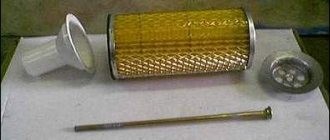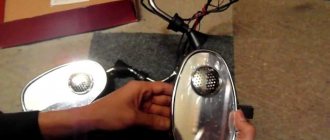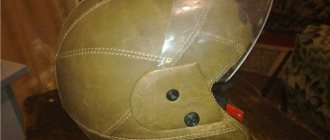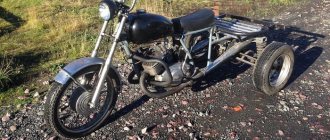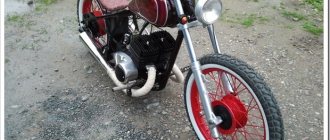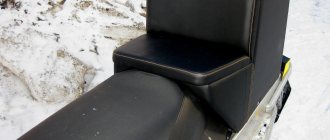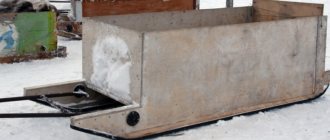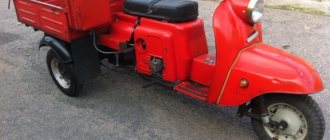Yamaha Cygnus X 125 scooter Yamaha Jog scooters Yamaha Jog RR scooter Yamaha Jog C scooter Yamaha Jog Z scooter Yamaha Super Jog Z scooter Yamaha Jog Z scooter NextZone Yamaha Jog Aprio scooter Yamaha Jog Artistic Spec scooter Yamaha BWs scooter Honda Cub scooters Honda Dio scooters Honda scooter Dio AF 18 Scooter Honda Dio AF 27/28 ZX/ZR Scooter Honda Dio AF 34/35 Scooter Honda Dio AF 34 Cesta Scooter Honda Dio AF 56/57 Scooter Honda Dio AF 62, AF 68 Scooter Honda Dio Z4 AF 63 Scooter Honda Tact AF 24 Honda Tact scooter AF 30/31 Honda Zoomer scooter AF 58 Honda Lead scooter Honda Giorno Crea scooter AF 54 Honda Giorno scooter AF24 Honda Gyro Canopy scooter Huatian Spider 2 scooter Baotian Tanco 50 scooter GX Stinger scooter SYM Jet EuroX scooter LIFAN ZID LF50QT scooter -8A
The files are stored on LetItBit hosting and they can all be downloaded for free. I get income from every download. If you also have a website, you can also start making money with LetItBit.
Keeway
Keeway F-act 125 scooter user manual (Microsoft Word, 508.5 Kb, in Ukrainian)
Keeway F-act 50 scooter user manual (Microsoft Word, 434.5 Kb, in Ukrainian)
Keeway Arn 50 scooter user manual (Microsoft Word, 3.8 Mb, in Ukrainian)
Keeway Hurricane 50 scooter user manual (Microsoft Word, 420.5 Kb, in Ukrainian)
Test drive of the Keeway Speed 150 scooter (PDF, 407 Kb)
Test drive of the Keeway Matrix 50 scooter (PDF, 480 Kb)
Honda Super Cub
The affordable and easy-to-drive Honda Super Cub model with a 50 cc engine and original ergonomics fueled Americans' interest in motorcycles. Coupled with the famous slogan “The best people ride a Honda,” advertising the Honda 50 (that’s what the Super Cub was called in the American market), this moped changed (if not shaped) the perceptions of American consumers about motorized vehicles.
Honda Super Cub
The Honda Super Cub has been in worldwide sales since 1958, with total units sold exceeding 100 million in 2021, but the Super Cub has not been sold at Honda dealerships in the United States since 1974. Will another start of sales of one of the most popular devices help Honda re-enter the same river and once again change the way Americans think about the motorcycle market?
Let's start by saying that Honda is clear: the Cub is 100% not a scooter. The Super Cub (along with the Grom and Monkey) is positioned in the minimoto subcategory of the road bike category. What's the difference? According to Honda, the fact is that motorcycles have manual or semi-automatic gear shifting, while scooters (at least Honda scooters) have a CVT transmission.
My acquaintance with the Honda Super Cub caused mixed feelings. In English, the ergonomics like the Cub are called “step-through”, which can be translated as “stepping over”, that is, when sitting on a motorcycle it is not necessary to be step-through (let’s try to treat it the way Honda wants) raise your leg high, just move it over the tunnel through the space between the steering wheel and the single seat - and you can sit down. This is in theory, but in practice it is not clear how to raise the foot: with the toe forward? Heel? Sideways? In the end, I realized that it was more convenient for me to sit on it with my leg over the seat, just like on any other motorcycle.
Honda officials say the original Super Cub was designed to be comfortable for girls, meaning dresses and skirts. Well, probably for 1959 this was a pressing question.
Honda Super Cub
Design of today's Honda Super Cub
A lot of water has passed under the bridge in 60 years. The design of today's Honda Super Cub is recognizably based on the original Honda 50 , but fortunately everything else about it is quite modern, starting with the way the engine starts.
Like many touring motorcycles, the Honda Super Cub has a keyless entry system , where you only need to have a special key fob in your pocket to start the engine. And in place of the keyhole there is a gray plastic lever that unlocks when the key fob approaches. Switch it to the “On” position, press the starter button (there is no kickstarter), and go!
The instrument panel is also modern, with an analogue speedometer and digital odometer, trip meter, fuel level and gear indicator. Diode lighting technology. The engine is no longer a fifty-kopeck carburetor; it has been replaced by a 125 cc engine based on the Grom engine. It has four gears with a rocker shift and does not require a clutch handle.
Shifting gears up with your heel is unusual at first, but after 20 minutes of city driving you get used to it. You can switch upwards with your toe, but it’s even more convenient with your heel. Oh, yes, neutral is down, all gears are up.
Having climbed up and more or less gotten comfortable, I set off and turned around the corner, where I began to frantically feel the back of the rocker with my heel. Having groped, I switched to second without difficulty and caught up with my colleague who was ahead of me. The response to the throttle is quite peppy for the city, but with 125 cubic meters and eight-odd horses (Honda for some reason announces the approximate power), the Super Cub is unlikely to win even a single race. We drove on paved streets and the maximum speed we reached was about 80 km/h on a large avenue. Honda claims a top speed of 96 km/h. Super Cub is unlikely to be able to please with high speed, but it is still very fun and enjoyable to drive.
Pedestrians smiled at me and turned to look at us, and I lost count of the number of drivers who rolled down their windows and gave a thumbs up or said, “Nice bike you have.” We were greeted by bikers, at least two - one on a Honda XR650 and one on some kind of cruiser. The children and their parents waved to us as we drove past their houses in the suburbs.
For pit bikers and riders - tuning Honda Super Cub
Ivan KSENOFONTOV, photo from the author’s archive
If you type the words “Honda Super Cub” into a search engine, you will find dozens of websites of clubs for fans of this technology. Their not virtual love is fueled by many tuning companies with hardware.
We have a peculiar market: scooters are selling so-so, “monkeys”, insanely popular in Britain and other countries, are practically unknown, and the class of pit bikes has only just begun its journey onto the tracks and is not yet popular among the people. Mini-choppers like the Regal Raptor are of limited popularity, and the “Saxon” (and essentially Chinese) MadAss mokick is frightening due to the price that the Germans are charging. Mokiks are going with a bang (they are offered under a dozen brands - ABM, C-Moto, GX, Irbis, Lifan, Reggy, Sagitta), which have already become “the first transport in the village.” What this whole company has in common is a 50 cc four-stroke engine, a clone of the Honda Super Cub, which falls into our indifferent “moped” category. Let us remember that its dimensions (cylinder diameter per piston stroke) are 39 x 41.5 mm.
Mokikis and scooters with larger cubic capacity are not imported due to the fact that they fall into the “motorcycle” category and are processed differently at customs. But some time ago, individual tuning parts and entire kits for “Kab” engines began to “fly” to us. So far the choice is very modest, but this is apparently a matter of time. We wrote about the option of not very complicated and relatively inexpensive tuning of the “Kab” engine in the last issue. Now let’s get acquainted with the global market for “charged fifty dollars”.
Takegawa's four-valve DOHC wonder head is called the Superhead+R.
Although these engines have existed for a long time (as well as their tuning), development along the path of “building muscles” continues. Just five years ago, the “ceiling” of cubic capacity was one-eighth of a liter (125 cm3), and this seemed to be an absolute record. Today they have reached incredible heights, and at the same time, many components and parts for “simple” engines are produced. For “fifty dollars” there are nits (in English kit - a set) to increase the cubic capacity and various high-tech in the form of four-valve “heads”, or two-valve ones, but with “huge” plates, ceramic cylinders and control units with variable settings. For those who don’t have the time or desire to tinker with kits, ready-made motors are produced by both the motorcycle manufacturers themselves and tuning firms. They can be divided into several types:
1. Actually “Honda” ones, produced at many branches in Southeast Asia.
This “new build” from Daytona, in addition to the miracle head, has a dry clutch on the gearbox shaft, which also has a hydraulic drive.
2. Chinese clones produced by more than a dozen companies. These units fairly accurately copy the “Japanese” source. Their cubic capacity is from 50 to 124 cm3, the crankcases differ in the location of the electric starter (top, bottom or without it at all). These engines have a fairly high degree of unification of components and parts, which makes them the most attractive for tuning, including in Russia.
3. Remakes from leading Chinese companies such as Lifan and Zongshen, as well as from large Japanese tuning companies (Takegawa, Daytona, Yuminashi), and the German MSR. Their crankcase was initially designed for a cubic capacity above 125 cm3, but the design is still similar to the Honda bestseller, and many non-core parts are unified.
The budget tuning option includes a crankshaft with a stroke increased to 49.5 mm, a cast iron cylinder with a diameter of 47 mm; the cubic capacity is 86 cm3.
4. Motors similar to the original in appearance, but radically redesigned inside. They are produced by such pillars of the motorcycle world as Yamaha and Kawasaki, and a smaller pillar - the Italian Polini. Naturally, they have their own components and parts, and there is almost no interchangeability with the Super Cub. The release of tuning is also limited. For us, as they say, they don’t make the weather...
The Sachs MadAss 125 uses the largest engine that can be obtained on the basis of conventional “Kab” engines - 120 “cubes”.
Chinese clones are diverse; the table shows the main types of motors. There are also a lot of whales here, and sometimes you can not buy specialized kits, but simply pick up stock parts from a larger engine. The simplest kit, intended for “fifty dollars”, has a 47 mm CPG, it increases the volume to 72 cm3. The set, in addition to the piston and cast iron cylinder, includes a cylinder head with an increased valve diameter and all kinds of gaskets and costs 150 euros. Without increasing the piston stroke, you can “grow” up to 90 “cubes”; The studs will not allow you to increase the cylinder diameter by more than 54 mm (the diameter size between their axes is 72 mm). Cylinders of this diameter are produced in several types, including aluminum with steel liners or even non-ramics.
The sophistication of the engine is also supported by such parts as an oil cooler, hoses, and fittings.
The next step is for those who are ready to replace the crankshaft with a large connecting rod stroke (49.5 mm). In combination with a cylinder of extreme diameter (52.4 mm), a cubic capacity of 110 cm3 is obtained. Naturally, you will need to replace the cylinder head, timing chain, intake pipe and install a carburetor with a large diffuser. This kit, which can be completed with an extended camshaft, double valve springs and larger valves, costs around 500 euros.
In some cases, it is possible to install a crankshaft with an even larger stroke (54 or 55.5 mm), and then the cubic capacity will increase to a quarter of a liter. Here you will need an oil cooler. A similar motor from the Chinese company FYM was at one time sold here (and the author of these lines has been successfully using it for many years).
In addition to the engine, this “Monkey” received an inverted fork, reinforced brakes and even two impressive mufflers.
If we talk about the possibilities of tuning standard “Cub” engines, it is believed that the starting point is the original Honda Cub 90 engine (it is clear that the “Chinese” do not “roll” here). After its “upgrade” to 110 “cubes” 8 hp are removed, and from 125 to 16 hp!
A breakthrough in fine-tuning “Kab” engines, but in a slightly different direction, was made by the Chinese company Lifan (one of the recognized non-Japanese manufacturers of such engines), which received a European certificate for a line of 100/110/125 cm3 liquid-cooled engines. This "water" with a manual clutch and electric/kickstarter is equipped with a pump (on the right under the generator), a thermostat and a radiator. To the latter you can add an electric fan. Of course, such power units look more show-off than the “air blowers”, but the possibilities for tuning them are practically zero, and the stock power does not excite the imagination: 6.8, 7.5 or 8.2 hp, respectively. at 7500 rpm (compression ratio 9.3). Most likely, they will take root in quads, where the issue of cooling is most acute.
Honda Monkey has a more familiar look with tuning from Takegawa.
Well, “air vents” with a standard crankcase have no stroke beyond 125 “cubes,” otherwise they will require a crankcase initially designed for large strokes and cylinder diameters. It is clear that this is not all: an increase in the performance of the lubrication system and strengthening of the clutch is required, which is often installed “normally,” that is, on the gearbox input shaft. The main parameters of such motors are given in the table.
It is not surprising that tuning flourished most magnificently in the homeland of “Cab” engines - in Japan itself. The largest companies Takegawa, Kitaco, Daytona have located production in New Japan (as the island of Taiwan is sometimes called), but you will have to forget about cheap gingerbread. But what quality!
The Takegawa engine has a well-ventilated 5-disc dry clutch and a high-capacity oil pump.
Takegawa has become famous for its “super heads” - they either have two giant valves (sometimes made of titanium) or four valves. The company even developed a Guinness World Records-worthy desmodromic four-valve DOHC head a la Ducati for the Honda Monkey, which the Japanese showed off at the Osaka motorcycle show in 2003. However, due to the high price, it did not go on sale. For the Honda XR50R pit bike, a 125 cc engine is available with Superhead + R - a head with two spark plugs and four valves, with rocker arms on a “roller stroke”. Another attraction of the engine is a dry clutch with hydraulic drive and a five-speed (!) close-range gearbox. Price - don't fall! - about $5000.
Such a “forward flow” muffler provides audio support for the miracle device.
Another Japanese company, Daytona Corporation, has considerable experience (since 1972) in building tuning engines for Monkey-type vehicles and pit bikes. “Toys” from Daytona in the form of ready-made engines from 125 “cc” are not cheap - owners of decoy bikes shell out up to 3,000 pounds for them. The last “squeak” is the engine of 150 “cubes”, which in stock version produces 18 hp. (at 10,000 rpm), and on the wheel; racing version - as much as 23 hp. And this is not the limit - tuning for 26 horsepower is expected! For the first time, a four-valve DOHC cylinder head was used (valve diameters 21/18 mm), compression ratio 12.5. The picture is complemented by a reinforced five-disc “manual” clutch on the gearbox shaft; The engine can only be started using a kickstarter. For the ignition systems of Daytona engines, the company produces a racing kit with a digital CDI unit that has two or four settings modes,
Another famous Japanese tuning company is Yuminashi. It has one of the coolest engines for decoy bikes - HK180R-SPL, 181.67 cm3. What’s striking is not only the volume of the “pot” (64 mm in diameter), but also a bouquet of other bells and whistles: a four-valve “head”, a nickel cylinder, a six-disc clutch, a Keihin carburetor with a 026 mm diffuser...
Serial 100 cc Lifan engine with 3-valve head (two of them are intake).
If Europeans lag behind, it is only in the number of companies involved in business. The most outstanding (and, by the way, available in Russia) is the Bavarian MSR. She gave birth to the world three modifications of the Monster Engine. The first engine - with a displacement of 138 cm3 - produces a little more than 10 hp, this pleasure costs 549 euros in Germany. It went on sale at the end of 2006 and became a springboard for further “muscle building.” The more extreme Monster Engine-III (141 cm3, 15 hp) has outputs to the oil cooler; Daytona adjustable ignition is produced for it. There is a kit for this engine (costing 399 euros in Europe) to increase the displacement to 162 cm3. More advanced - with a cylinder diameter of 67 mm, a racing camshaft, a ceramic cylinder and a low-height piston, it lightens the wallets of Bavarian racers by 999 euros. Another kit is offered with an increased diameter of the CPG to 59 mm and a crankshaft with a stroke of 64 mm to achieve a cubic capacity of “175”. The latest, “evil” monster from MSR is Monster Engine +R, born in early 2008. Its volume is impressive - 187 cm3 (dimensions 67 x 53 mm). A compression ratio of 12 and the use of larger diameter valves (30 mm inlet and 24.5 mm exhaust) make it possible to produce more than 20 hp as standard. at 10,000 rpm. The price is also impressive: in the monster’s homeland – 1899 euros. And in the future, a completely fantastic “Kab” (if you can still call it that) engine from MSR - 220 cm3. The prototype was built by the German Arno Schwendner, who took the 150 cc “monster” MSR as a basis.
But let’s go down to earth, to “our” Chinese manufacturers. The Celestial Empire is also not asleep: Lifan and Zongshen, as if on command, began producing large-capacity engines. The 150 cc Sonshen has valves with a diameter of 23 and 28 mm, and a motorcycle-type remote rack-and-pinion timing chain tensioner has appeared (all Kabs have an original hydraulic tensioner and guide roller). The clutch is left on the crankshaft and is manually released. The cylinder head has a larger hatch for adjusting the valves (it is oval in shape and is secured with two bolts instead of the usual screw plug). Oil is supplied to the head not through a channel in the body of the cylinder and head, but through a tube placed outside - this is more reliable and there are no problems with sealing the channels. Naturally, terminals are provided for connecting the oil radiator. There is also a record capacity of 195.6 cm3 in the bins, but it is only for ATV. And Lifan offered a 150 cc version, which produces 16 hp in stock. (at 7500 rpm). It uses a head with two valves (27/23 mm) and an aluminum cylinder with a ceramic coating. We also note a five-disc “manual” clutch on the gearbox shaft, a cartridge oil filter and digital CDI ignition. Price - 400 euros.
The main advantage of the “Chinese” - budget - has already been appreciated all over the world. Why spend several thousand “greenbacks” on tuning a small-capacity engine when you can buy a factory unit that initially has a large cubic capacity and power. After all, the main feature is that absolutely all “Cab” engines, including “monsters”, have the same installation dimensions and fit perfectly into even the oldest “decoys” and pit bikes, as well as scooters. So they have a great future, including in Russia.
The basic Takegawa engine is not so large in cubic capacity (125 cm3), but in the ability to apply proprietary tuning.
WORKING VOLUME AND DIMENSION OF “KABOV” MOTORS MADE IN CHINESE
Japanese Honda Motor has designed a new automatic transmission for scooters such as the Honda Cub and similar ones. The new transmission is called CV-Matic and is fully automatic. As Honda notes, with this box, Cub-type scooters, which have gained great popularity and have a whole army of loyal fans, especially in the countries of South and Southeast Asia, and identical ones will become even more convenient to use.As of 2010, vehicles supplied (or manufactured) by Honda in ASEAN (Association of Southeast Asian Nations) countries will be equipped with a new type of gearbox.
The CV-Matic has a completely new cooling system, based on technology used by Honda in small motorcycles, which protects the drive belt from high temperatures. This increases reliability and extends the service life of the belt, and also allows this unit to fit into a more compact volume. Thanks to the mid-mounted engine, Cub scooters can accommodate larger wheels than conventional scooters. And reducing the size of the box will give designers even more room for imagination. The very first Cub motorcycle, the Honda Super Cub C100, was introduced in Japan in 1958 and quickly gained popularity around the world as a convenient vehicle for both business trips and everyday use. These motorcycles were sold in 160 countries. August 2008 marked the 50th anniversary of the start of production of these bikes. Now more than 60 million of them have been sold worldwide! When the Super Cub was launched, two-stroke engines ruled the motorcycle world. However, already in the first generation of Super Cub innovative 4-stroke 50cc engines were installed. Super Cub C100 also received a creative and original design and a low-floor frame and a number of other interesting and new solutions for its time. As a result, since the release of the first motorcycle in the series, their design has not changed in a global sense for half a century. The export of Super Cub series motorcycles began in 1959, first these models began to be exported to the USA, and then gradually they appeared in other world markets. Since 1961, assembly production of motorcycles of this model has been operating in Taiwan; later, in order to quickly satisfy consumer demand, production was established in other places. Now motorcycles of this series, known in particular under the name Super Cub 50 Standard (Japan) and Wave 125i (Thailand), are produced in 15 countries around the world.
| Next > |
